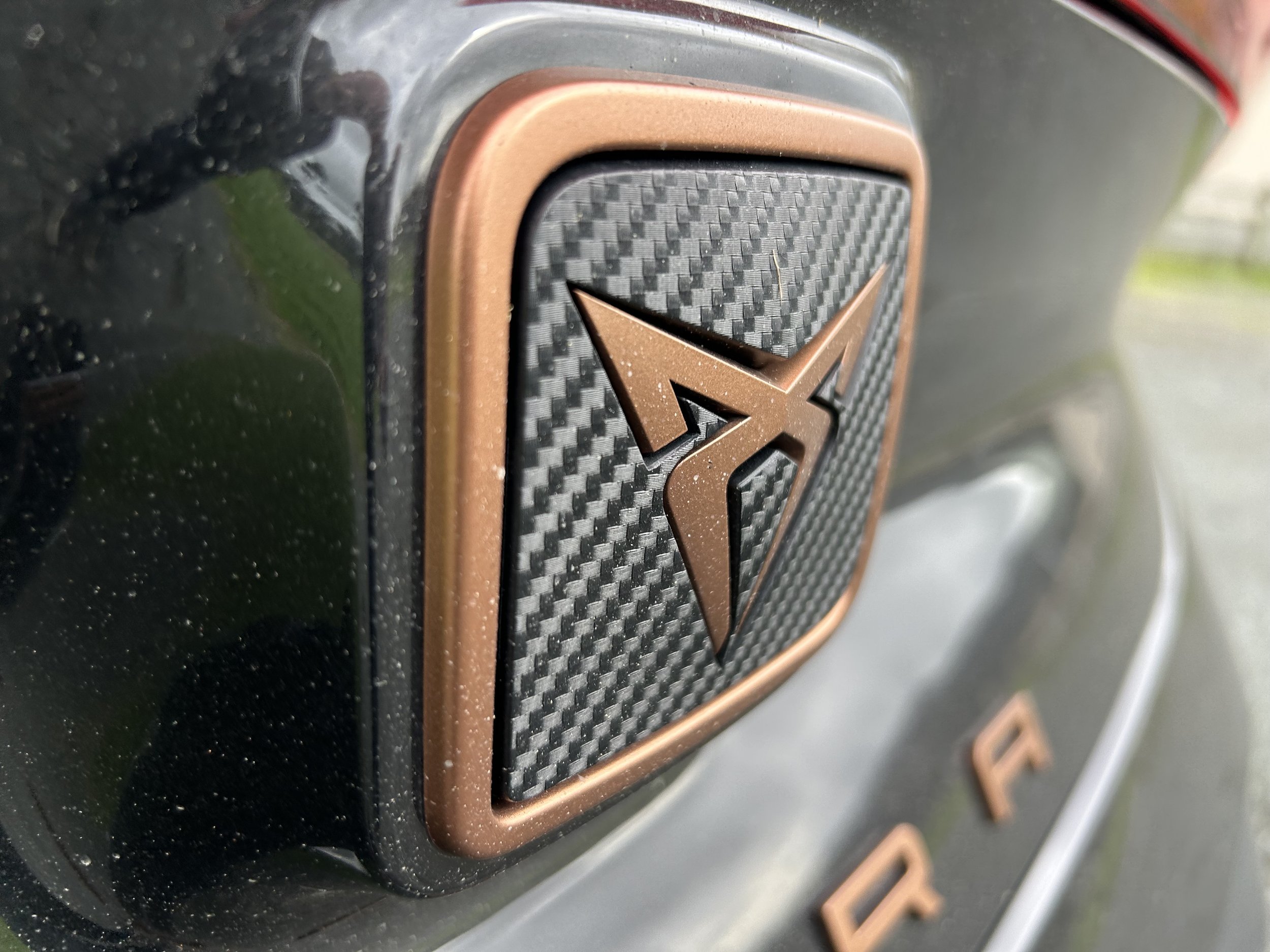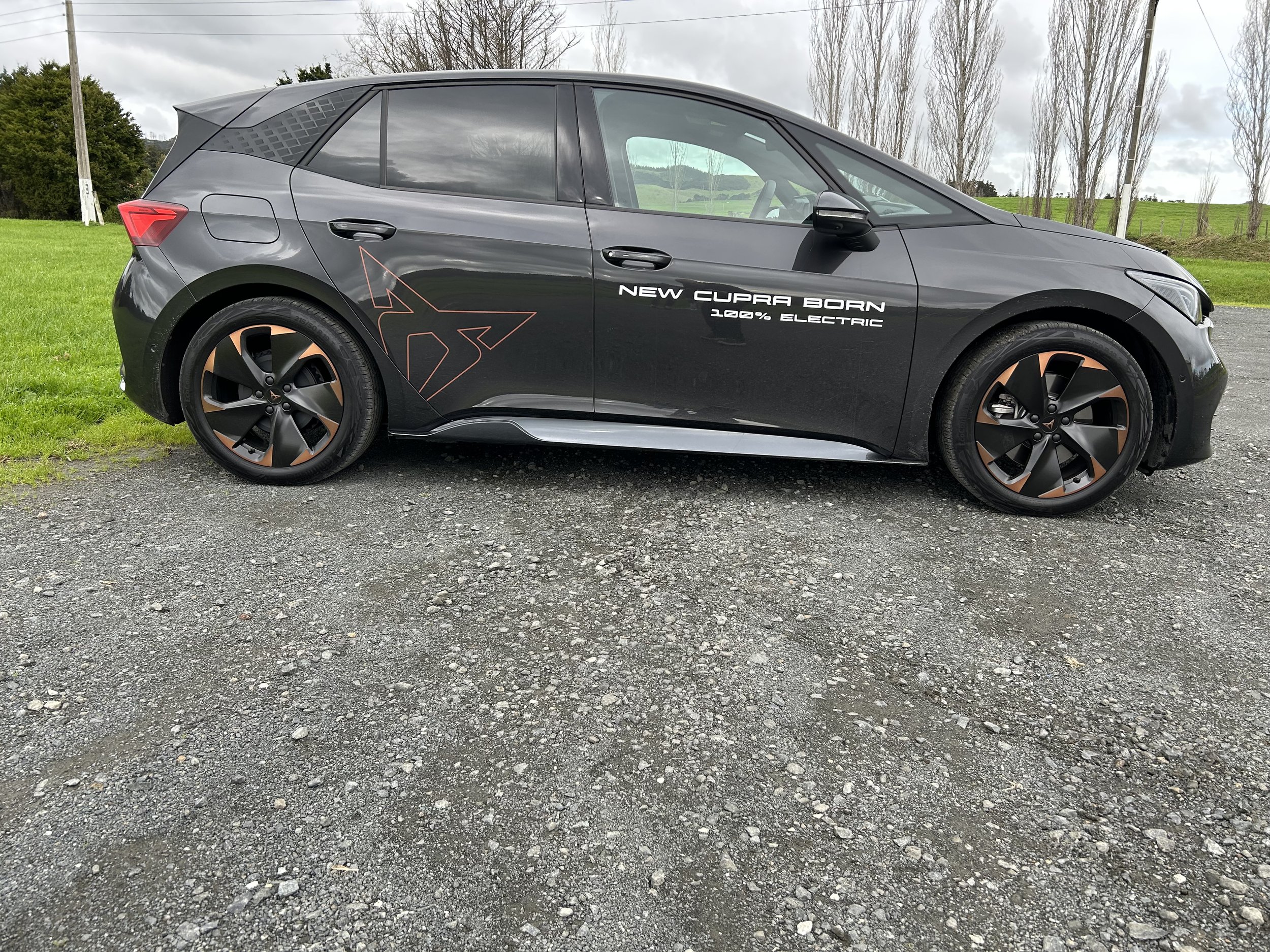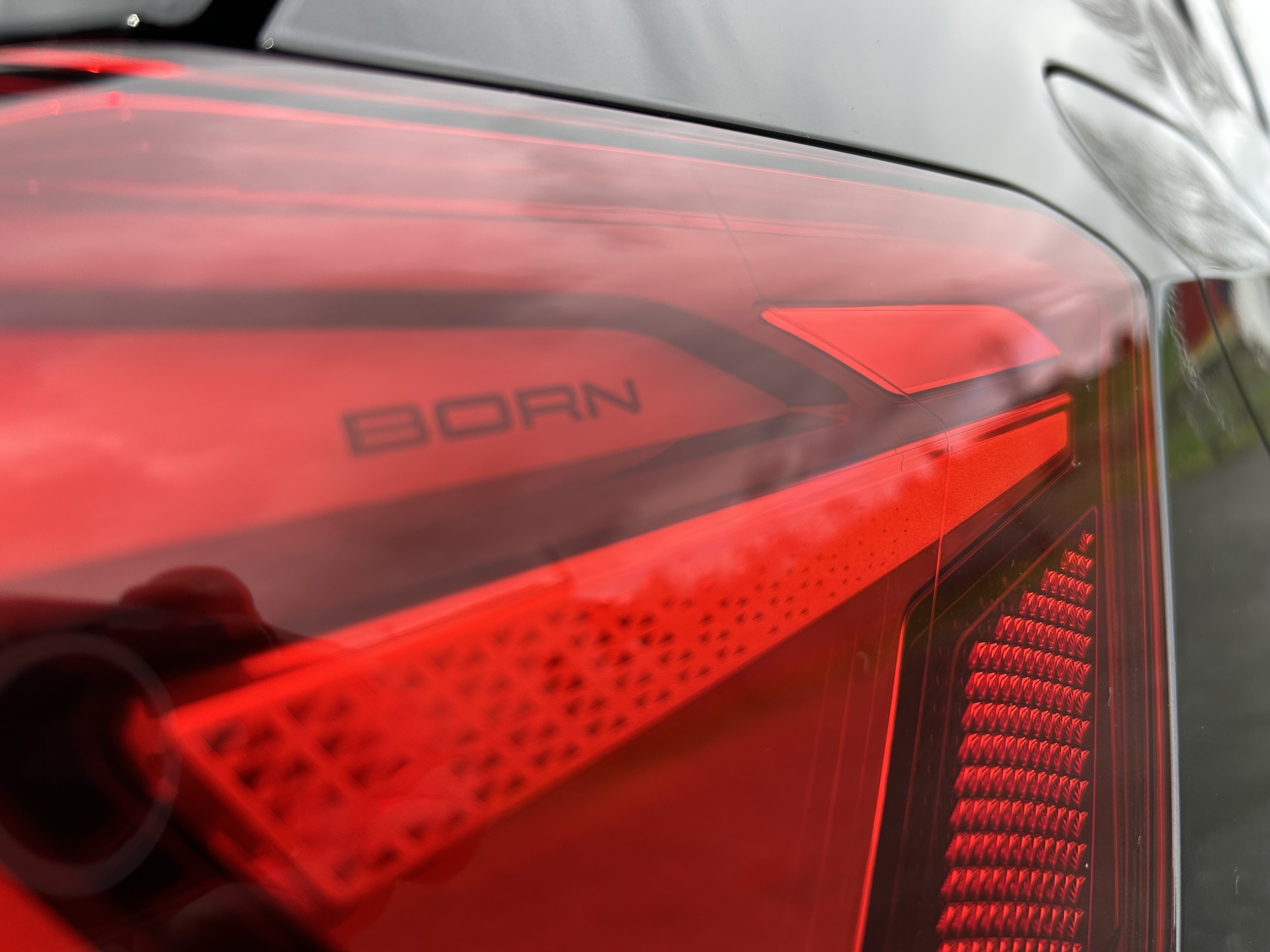Cupra Born first drive review: Enlivening electric 'loco' motion
/Hot hatch fans have been wondering what’s in it for them from a world going electric.
AXIOM already seems promising; electric cars really can be more than appliances - and, just as vitally, those with high component share can still have their own clearly defined character.
Quite fittingly, proof comes from a battery pure product out VW Group.
Platform and combustion powertrain-sharing by its medium and compact cars, especially in four-cylinder format, is well-known. A Skoda, an Audi, a SEAT and a Cupra, a VW and even - to a degree - a Porsche will share base elements.
You know about this commonality, but how often can you feel it? Quite the contrary, those brands are so deft at developing their own flavours that one rarely has much of the taste of any other.
Electric is patently a different thing, for all sorts of reasons. Some will say an electric car – once you’ve launched it once or twice to get a sense of how fast it can be – is essentially as exciting as a washing machine. I don’t subscribe to that sentiment, but would agree that character-building becomes a greater challenge with electrification, all the more with a whole family sharing core elements.
That’s the VW Group MEB playbook. A common platform and powertrain delivering with numerous cars coming here; five (Cupra Born V, Skoda Enyaq, Audi Q5, VW ID.4/ID.5) already landed and finding their feet, others still to come.
Are they all the same? Not in look, for sure. And - good news - there’s growing evidence they are unlikely to be too ‘samey’ in feel, either.
Born V - just Born from now on - was my third MEB exposure on NZ roads; following on from the Skoda and ID.4. All those experiences have been limited, yet I reckon that if any were revisited under blindfold, I could tell one from the other; not just from touch but also driving feel. Differing ride qualities alone are one giveaway.
If it came to choice? As much as I’m a Skoda fan - coming up to four satisfied years with (EV-philes, don’t judge me) a diesel Karoq - Born holds more of my interest.
Primarily, because it’s in a convenient price zone, not least with this week’s news at this first drive event that a further $2000 has been taken off a launch price that in itself was very hard fought for.
Rebate rules are rigid - just Cupra being $10 below the $80k cut-off, as are so many EVs are was fine, but it now being at $77,990 is better.
Second? The whole concept of the car, really. In utilising much of the same architecture as the ID.3, the first of the ground-breaking VW electrics, Born is physically slightly smaller than Enyaq, the Audi and the other IDs; with a 4.3 metre length and generous width that affords a pleasingly pugnacious square stance.
Beyond that, Born builds on this because it is a Cupra, which is inherently about bespoke sportiness.
The Spanish side of the VW business is expert in taking the whole concept of badge engineering far further than generally is, on understanding that adding flair and verve - to sometime quite stolid VW product - is vital to creating emotional connect, so vital to purchase decisions.
As it has been; Cupra only established as a standalone performance marque in 2018 and, in the years since, has enjoyed an incredible volume increase.
Beyond understanding that badge change alone just doesn’t deliver any more excitement, Cupra has determined that with this, its first electric, in absence of a soundtrack, style is key.
Only a handful of VW ID.3s are in NZ, but if you spot one, and are driving a Born, it’s worth parking alongside. VW design is good. But the Cupra? It’s so obviously the more raffish and interesting looking car. It is properly sporty in appearance, especially around the front.
The production guise present rarity in looking even better than it did as a design study. Born’s story there is also unusual, as it of course started life as the SEAT El Born. But then the parent decided to make Cupra standalone brand, ultimately with responsibility for electric models, so that cut ties with SEAT, and with that Born’s designers felt emboldened to just add a few more details still. Cupras are extrovert, but out of all that are here, Born is the most gregarious, not least around the front end.
With petrol Cupras, the stylised badge - which, unsurprisingly, the make describes as a tribal emblem - is so immediately overt as to become the primary love-hate fixation. The logo is still bold here but it seems to sit more comfortably in the wider design surrounding.
There’s some neat detailing with Born that also helps; the name being spelled out within the skinny grille element is cool; likewise the bonnet is now more creased to bring greater focus on its centre. Combined with the LED headlights and lower bumper section that heightens the car's stance and presence, it has a chic menace.
The design freedoms that come with electric also enhance the Born’s air of muscularity. For a car of this size to have 19 inch rims as standard and a 20-inch wheel as an option is bold, and Born’s are of a particularly striking design. Where the wheels locate also has impact. Electric car design allows these to be pushed out much further at either end than what you would typically see in a combustion car. There are all sorts of other design elements incorporated to accentuate the air of verve. Overall, it’s far from dull looking.
Less so than the donor, really. That’s quite a big achievement, given some body elements are shared, most notably the rear C-pillar section. However, on Born, that area has a more striking appearance, through the panel being meted a striking three-dimensional triangular dimpling. This design element continues to the interior.
Cupra’s other design signature are copper-coloured inserts; you seen them outside and even moreso in a cabin that, is quite minimalist - because VW feels electrics should be. I wonder how well the copper theme will age, but it certainly is distinctive and, again, seems suited to the whole electric thing.
The Born's basic interior layout apes the ID.3’s; reasonably commodious, though better for four adults than five. The double A-pillar might challenge for visibility if you’re not particularly tall, but all-round vision is fairly decent.
Space in the rear is quite good thanks to that elongated wheelbase, and a flat floor means that even though the middle seat is narrower, there's no lack of foot space. The lowish roofline means that, though there’s just enough for an adult of my size to be reasonably comfy in the back if they were sitting behind the driver’s chair positioned for the same-sized person, headroom is a bit tight. Both outer seats feature ISOFIX points and there are two USB-C ports in the back as well as the front. Boot capacity is 385 litres.
A couple of screens, few actually switches and knobs, a lot of haptic touch operability. That’s life in an electric age. Cupra and ID.3 travel the same path; you get a modestly sized digital instrument binnacle that also houses the chunky drive selector. A free-standing 12-inch centre touchscreen in the middle of the cabin for infotainment and climate control.
The design is one that has been meted enough consumer criticism to prompt VW to make changes for facelift ID.3; chances are the updated Born, here in a year, will achieve those revisions, also. In current state, the operabilities are okay, but can be awkward.
For me, the big screen’s touch-sensitive base that allows adjustment of volume and temperature settings by sliding your finger along seems an execution better suited to when the car stationary than while driving. Likewise, the mirror adjustment control; it’s also weirdly reactive. The selector action for Drive and Reverse might require some thinking about but the powertrain on/off is also bound to catch out some; being a small button hidden on the steering column, it’s not at all immediately obvious.
The seats are produced using recycled materials that comes from a company called Seaqual, employing local fishers in Spain to collect marine plastic that is then recycled into a yarn that goes into producing the seats.
Sporty bucket seats are standard fare in the Cupra; they’re a bit on the firm side but do hold you in place.
Of the three battery sizes available in Europe, just the most powerful is here for now, but Cupra NZ believes the 2024 refresh will lend opportunity to also deliver the car with a 58.7kWh type, which would mean a reduction in range of around 100kms against the 511km cited for the current car. The base 45kWh unit isn’t sought. All values, but the way, are the usable - or net - capacities.
Born is rear-drive and will likely stay that way; reports that the update will bring dual motor/all-wheel-drive being disputed.
There are a number of driving modes to choose from and our 170kW motor has the e-Boost Performance Pack, activated by an extra Cupra mode that is activated via a steering wheel button (or by just flooring the throttle), which gives a 20kW bump in power for brief periods depending on the state of battery charge. at the other end of the spectrum, you can alter the strength of the regenerative braking by calling up B mode via the gear selector.
Part of the bespoke chassis setup of the Cupra compared to the ID.3 is the suspension, which lowers the car's ride height by 15mm on the front axle and 10mm at the rear.
That difference is noticeable in the look and the ride, which is tangible firmer than Enyaq’s.
Cupra says work has been done with the damper setup to ensure that even with the big wheels it's possible to roll over sharper objects such as speed humps without grimacing, but that comment of course was made in respect to their domestic road surfaces, not NZ coarse chip, which tends to be less kind to Euro-flavoured chassis and damper tuning.
You could pick that on our drive day. The car I drove was quiet and best resolved on Auckland motorway; more thrummy and edgy on less smoother surfaces.
The ride being on the taut side is also necessitated by the need to control the substantial battery mass. The firmness can make it feel unsettled over bumps at lower speeds; it improves at higher pace, thankfully.
That it felt more resolved when in the Sport setting than in Comfort won’t necessarily be a bad thing, given the car’s overall ethos is to engender sporty fun.
The usual VW Group finishing touch for performance product under any of its mainstream badges is to include Dynamic Chassis Control; electronic damper adjusts that is designed to let the driver further fine tune the driving experience. DCC is availed on Born overseas, but won’t be here. It would be interesting to drive a DCC-equipped example, just to get a handle on how much better this car could be.
Even so, I’m confident now to suggest anyone who enjoys a fun car will not be disappointed by how the Born delivers. It's not outright crashy and the way the body movements remain controlled even when tackling large speed bumps is especially impressive. You’ll be delighted how big its cojones are; the roads we experienced it on only allowed so much experimenting. I’d love to run one on a track. Even without a blasting soundtrack, it imparts as a rambunctious little bull.
Having a wheel at each corner, decent wide section 215/50 R19 rubber and a traction and stability controls that are attuned to keep their nerve when the car is pushing makes it nimble, manoeuvrable and focussed. There’s a good deal of front-end grip and, from first taste, it lends impressive body control over challenging roads, though you are aware it’s carrying almost two tonnes of weight.
But the flexible nature of the drivetrain also carries its weight. Step off is urgent, of course, but it also feels particularly hot hatch-like when zapping out of corners; in other respects performance is satisfying. The big difference between this and other Cupras is that there’s no rorty engine note. The motor is quiet even under hefty acceleration. It has excellent braking performance, though judging the brake pedal feel requires some attention.
Absenting DCC is not the only electronic exclusion that disappoints. There’s no way, yet, to make the VW Group’s smart travel assist software function operate here. Which means no ability for over-the-air updates and, because you’ll have to rely on your phone - which needs to be tethered (as wireless charging is part of the fancier package) - to run navigation and locate charging spots, which means it lacks the highly-useful facility to determine how far you can go, and what the replenishment choices are.
The car I drove is one of two, touring the country to raise interest ahead of public availability in September. By then it’ll conceivably command a real-word price of $70,885, as the Clean Car discount by then will be $7015 - unless the RRP has bumped back to $79,990. It might, because the $77,990 price is there as a pre-release inducement. One reason for buying now is that you can achieve the special Aurora Blue paint finish for $850. At the original price, it was basically a $7865 option because it took the car over the rebate cap.
If Born was petrol-powered, it’d almost certainly also have something the electric cannot deliver: An exuberant exhaust note to signal its excitability. It’s going to take a a while to get used to hot hatches that have taken a vow of silence.
Still, there’s no doubt all the other crucial elements are there, including perhaps that one ‘X’ factor that really sells a good fun car. Burning desire to simply drive it just for the sake of doing so. Is it that kind of car? Initial signals are good. Hot hatch fans who have been wondering what’s in it for them from world going electric should at least give it consideration.
Born presents, pardon the pun, a bit of a rebirth for Cupra, and two other full electrics are in the pipeline: Tavascan out of China as a VW ID.5 equivalent in early 2025 and the Raval, which has previewed as the Urban Rebel, a pint-sized city sizzler.
It’s also bringing in plug-in hybrid versions of the Formentor, landing in September for $78,500, and Leon Sportstourer, here by the end of the year. The Terramar, here in mid-2025, will also offer in PHEV, with around 100km pure electric range, and be Cupra’s last-ever combustion-engine car.
Richard Bosselman attended this event as a guest of the distributor, with travel, a meal and small gift provided.























